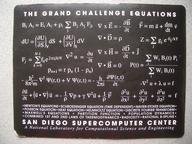Quiz Answer Key and Fun Facts
1. Which type of storage system uses mechanical energy to store energy?
2. Which storage system needs to be stored at -400 degrees F to hold energy?
3. Ludington, Michigan has the biggest ___________ storage system in the world.
4. Who is considered the father of chemical batteries?
5. Which energy storage system is usually built in abandoned mines?
Source: Author
ilovethisgame
This quiz was reviewed by FunTrivia editor
crisw before going online.
Any errors found in FunTrivia content are routinely corrected through our feedback system.

